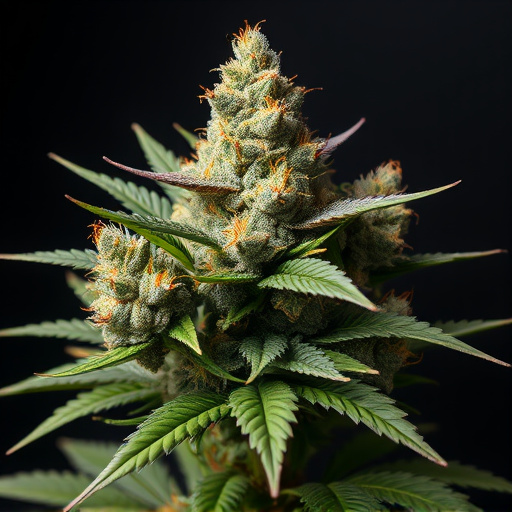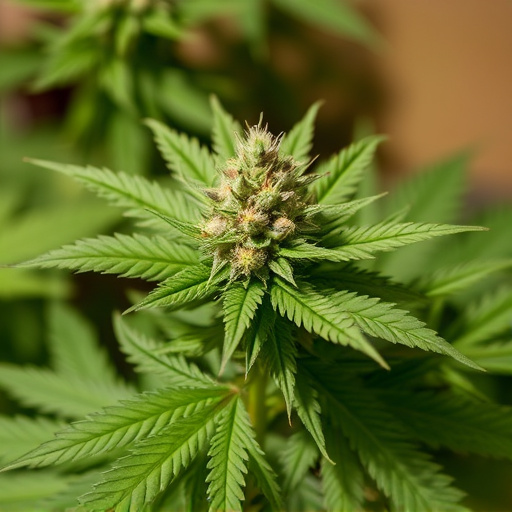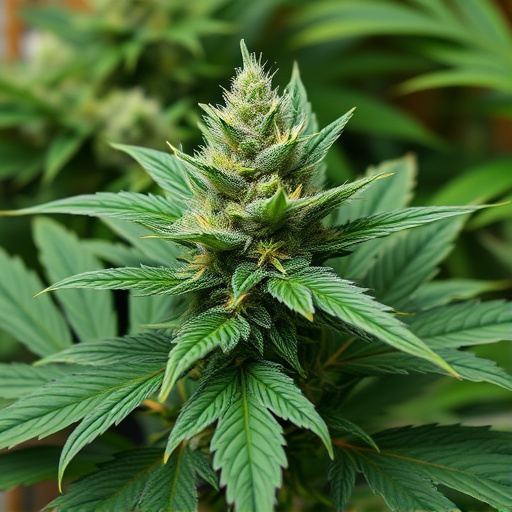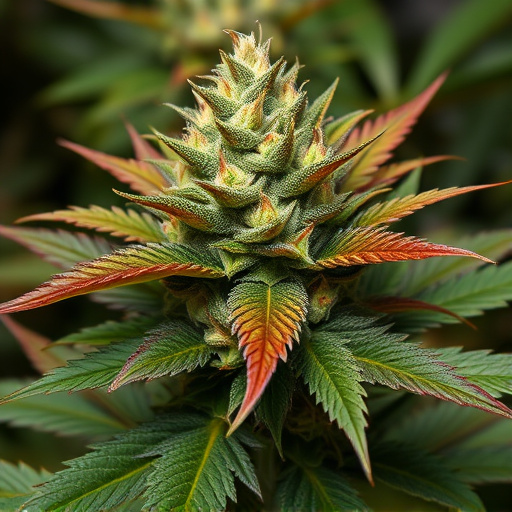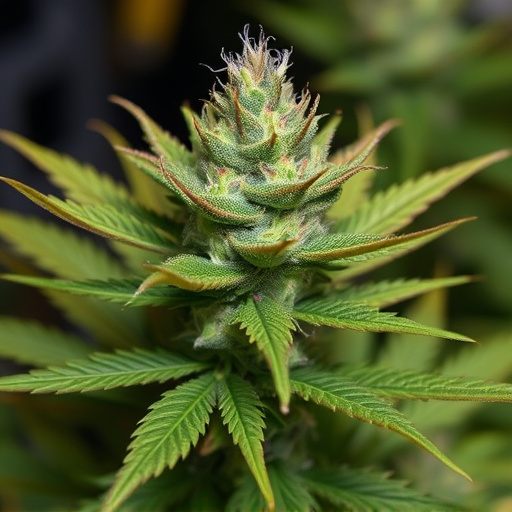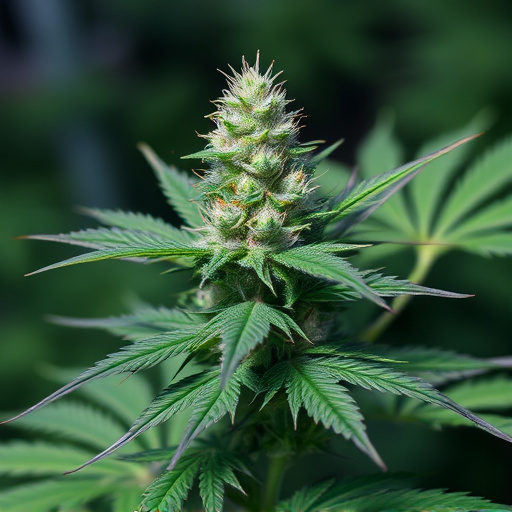Terpenes, nature's essential oils in cannabis, synergistically interact with cannabinoids like THC and CBD to create unique strain profiles and targeted effects. Understanding these aromatic compounds helps users select potent cannabis strains for specific medicinal or recreational purposes, such as relaxation, mood elevation, and anxiety relief. Terpene profiles offer a tailored experience based on desired outcomes, driving interest among cultivators to breed high-potency varieties with specific benefits.
Terpenes, the aromatic compounds within cannabis, play a pivotal role in shaping both the plant’s distinct scent and its therapeutic effects. Beyond their contribution to flavour, terpenes significantly enhance cannabis potency and interact synergistically with cannabinoids like THC and CBD. This article delves into the intricate world of terpenes, exploring how they contribute to the development of potent cannabis strains and the unique experiences they impart on consumers.
- Understanding Terpenes: The Aromatic Compounds in Cannabis
- The Role of Terpenes in Enhancing Cannabis Potency and Effects
- Unlocking the Secrets: How Terpenes Contribute to Potent Cannabis Strains
Understanding Terpenes: The Aromatic Compounds in Cannabis

Terpenes are aromatic compounds that play a significant role in cannabis plants, contributing to both its scent and flavor profile. They are volatile oils produced by various plants, including cannabis, and are responsible for the unique fragrances we associate with different varieties. In the context of potent cannabis strains, terpenes offer more than just a pleasant olfactory experience; they have potential therapeutic benefits.
Each terpene has distinct properties that can enhance or alter the effects of cannabinoids like THC and CBD. For instance, myrcene is known for its relaxing and sedative qualities, making it popular among users seeking relief from insomnia or anxiety. Limonene, with its citrusy aroma, may boost mood and provide a sense of clarity. Understanding these aromatic compounds is crucial in navigating the diverse world of cannabis, especially when exploring potent strains that cater to specific medical or recreational needs.
The Role of Terpenes in Enhancing Cannabis Potency and Effects
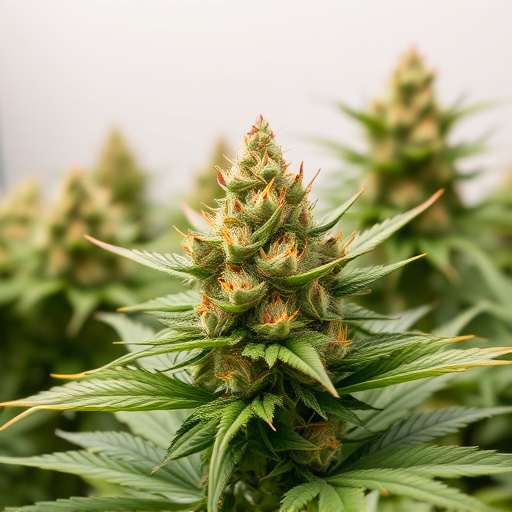
Terpenes, often referred to as nature’s essential oils, play a pivotal role in enhancing the potency and effects of cannabis flowers. These aromatic compounds, produced by various plants including cannabis, contribute significantly to the unique flavour profiles we associate with different strains. Beyond their contribution to taste, terpenes interact synergistically with cannabinoids like THC and CBD, modulating and intensifying their effects. This interaction is what many refer to as the “entourage effect”.
In potent cannabis strains, specific terpenes can amplify the psychological and physiological impacts of cannabinoids. For instance, myrcene, a common terpene known for its earthy scent, has been linked to sedative properties that may promote relaxation and sleepiness. Meanwhile, limonene, with its citrusy aroma, is associated with uplifting effects that can enhance mood and cognitive function. Understanding the terpene profile of a strain allows cannabis users to tailor their experience based on desired outcomes, making each potent cannabis strain a unique blend of flavour, aroma, and effects.
Unlocking the Secrets: How Terpenes Contribute to Potent Cannabis Strains
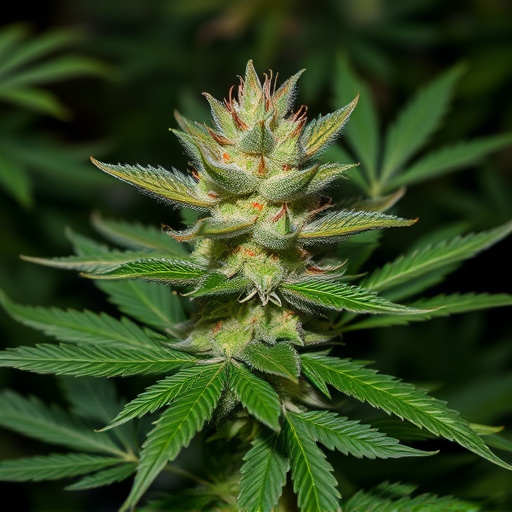
Terpenes, often referred to as the “essential oils” of plants, play a pivotal role in crafting the unique profiles and potent effects of cannabis strains. These aromatic compounds are not just responsible for the distinct smells and flavors we associate with different cannabis varieties; they also interact synergistically with cannabinoids like THC and CBD, shaping the overall experience. By unlocking their secrets, researchers have begun to understand how terpenes contribute to the development of potent cannabis strains.
Each terpene possesses its own therapeutic properties and can enhance or modify the effects of other compounds within the plant. For instance, myrcene, known for its earthy scent, has been linked to inducement of relaxation and sleep; linalool, with its lavender-like aroma, is celebrated for its calming and stress-relieving qualities. The intricate dance of these terpenes and cannabinoids results in a complex mix that can deliver targeted medicinal benefits, making certain strains more potent for specific conditions. This natural synergy has sparked interest among cultivators aiming to breed high-potency cannabis varieties with tailored effects.
Terpenes play a pivotal role in shaping the unique aroma, flavor, and effects of cannabis flowers. By understanding their complex interplay with cannabinoids, cultivators can intentionally craft potent cannabis strains that cater to diverse consumer preferences. The science behind terpenes is evolving, offering exciting possibilities for the future of cannabis cultivation and enhancing our overall experience with this versatile plant.


